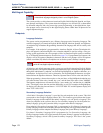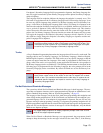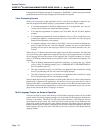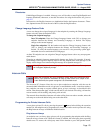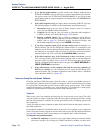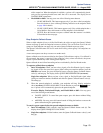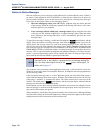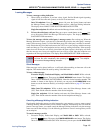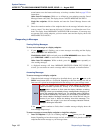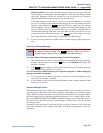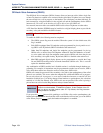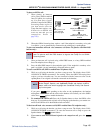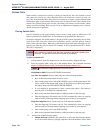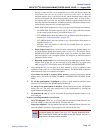
System Features
INTER-TEL
®
CS-5200/5400 ADMINISTRATOR GUIDE, ISSUE 1.1 – August 2005
Page 180 Station-to-Station Messages
Station-to-Station Messages
Intercom callers may leave a message waiting indication if a called endpoint is busy, if there is
no answer, if the endpoint is in Do-Not-Disturb, or when they are connected to or placed on
hold by another endpoint. Users are allowed to leave message for, and respond to messages
from, users on other nodes. There are two messaging options:
• Have the called party return your call. Display endpoints show the source and time
of the message. When the called party responds to the message indication, a call is auto-
matically placed to your endpoint.
• Leave a message with the called party's message center. Display endpoints show that
a message was left with the endpoint user’s assigned message center. When the called
party responds to the message indication, a call is automatically placed to his or her
message center.
To signal that a message is waiting, a called Inter-Tel endpoint’s button flashes, and the
display shows the number of waiting messages. Each time the button is pressed, the
display shows the message source for each of the waiting messages in the order they were
received. For messages from endpoints, the display shows MSG: (endpoint) and the date and
time of the message. For messages from Voice Mailboxes, the display shows XX MESSAGES
FROM MBOX XXXX to indicate the number of waiting messages in each mailbox that left a
message. (This is especially helpful at endpoints with multiple mailboxes.) For single line end-
points, a system programming option can be enabled that sends six short message waiting
tones when the user lifts the handset or presses the hookswitch.
Any endpoint, voice processing system application, hunt group, or off-node device can be des-
ignated as the message center for an endpoint. However, an endpoint cannot be programmed as
its own message center.
If the designated message center is a Voice Mail hunt group, the Voice Mail hunt group is
called after the Message Wait timer expires. When the Voice Mail unit answers the call, the
called party’s “mailbox” is automatically dialed. The caller can then leave a message in the
mailbox. The called party’s button flashes, and the message display indicates that the
message was left by the Voice Mail hunt group.
Each endpoint user can leave message waiting indications at more than one endpoint. If more
than one message is received from one endpoint, the message display shows only the first mes-
sage, and all other requests are ignored.
When a endpoint is forwarded or has system forwarding, and a caller leaves a Message Waiting
indication after calling the forwarded endpoint, the message indication appears at the original
endpoint instead of the one that received the forwarded call.
NOTE
IP and digital phones are equipped with a Message Lamp located on the upper
right-hand corner of the endpoint. If programmed for the Message Waiting fea-
ture, this lamp flashes/lights whenever the button flashes/lights. For
details, refer to
page 117.
MSG
MSG
MSG
MSG



